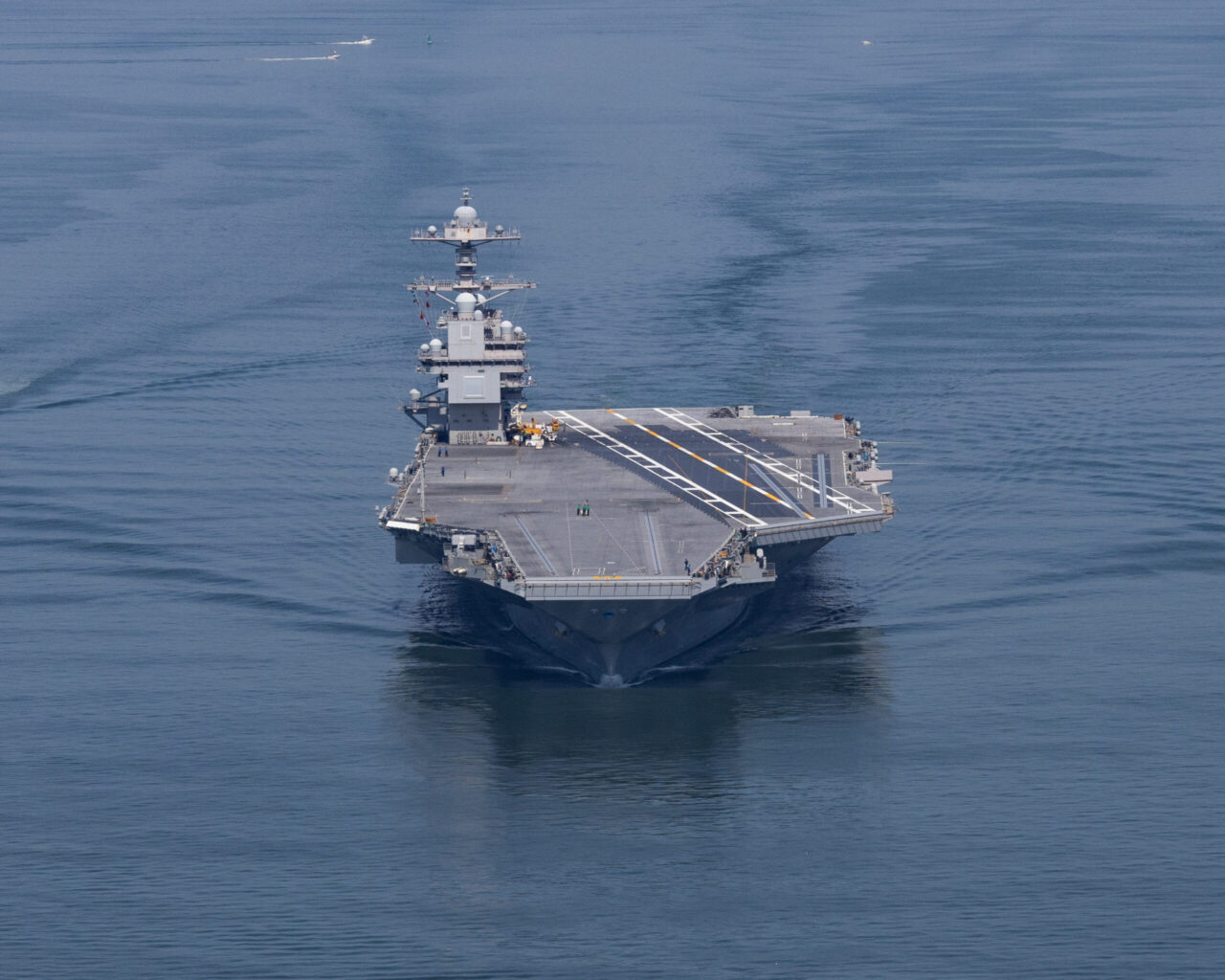
The U.S. Navy's next-generation aircraft carrier, the USS John F. Kennedy, is facing significant delays and will likely not be operational until at least March 2027. This setback, revealed in the Navy's 2026 fiscal budget, adds to a growing list of timing issues plaguing the service's shipbuilding projects, impacting everything from destroyers and frigates to submarines.
Adding to the concerns, the future USS Enterprise (CVN-80), another Ford-class carrier currently under construction, is now projected to be delivered a year and a half later than initially planned. The Enterprise is slated for commissioning sometime in September 2029.
Addressing the Senate Appropriations Subcommittee on Defense, Adm. James Kilby, the acting chief of naval operations, acknowledged the widespread delays. "We are behind in every ship class [by] different rates, but at least years," he stated. Despite these challenges, Kilby emphasized the Navy's focus on China as its primary strategic competitor and its ambitious goal to have 80% of its ships, submarines, and aircraft combat surge-ready by January 1, 2027. Achieving this target will require addressing critical issues such as personnel retention, supply chain vulnerabilities, and budgetary constraints.
Reasons Behind the Ford-Class Delays
The Ford-class carriers represent a significant leap forward in naval technology, incorporating cutting-edge systems designed to enhance operational capabilities. However, these advancements have also encountered developmental challenges.
According to Navy budget documents, the delay of the USS John F. Kennedy is primarily attributed to the need for "completion of Advanced Arresting Gear (AAG) certification and continued Advanced Weapons Elevator (AWE) work."
Unlike the Nimitz-class carriers, the Ford-class integrates an Electromagnetic Aircraft Launch System (EMALS) and Advanced Arresting Gear (AAG). The Nimitz-class relies on steam catapults, while EMALS utilizes electromagnetic technology to launch aircraft from the flight deck. The Navy claims these new systems are designed to increase sortie rates by 25 percent and generate triple the power compared to the older technology.
While EMALS is now operational and considered a major improvement, its development was not without its hurdles. Similarly, the Ford-class's advanced weapons elevators experienced design and implementation challenges. Despite these delays, the lead ship of the class, USS Gerald R. Ford, is currently underway on its second scheduled deployment, indicating progress in overcoming initial setbacks.
Efforts to Revitalize Shipbuilding
Recognizing the critical importance of a robust naval fleet, past government administrations have expressed concern over the shipbuilding delays and have proposed measures to address the underlying issues.
One proposed initiative was the establishment of a new office of shipbuilding within the White House, intended to revitalize the American shipbuilding industry, encompassing both commercial and military shipbuilding. The goal was to restore the nation's shipbuilding capacity to its former strength.
"We used to make so many ships. We don’t make them anymore very much, but we’re going to make them very fast, very soon," officials stated, emphasizing the potential impact on national security.
The Path Forward
The delays facing the USS John F. Kennedy and other shipbuilding projects highlight the complexities of developing and integrating advanced technologies into modern naval vessels. Addressing these challenges will require a multi-faceted approach, including:
- Streamlining Acquisition Processes: Improving the efficiency and effectiveness of the Navy's acquisition processes to reduce delays and cost overruns.
- Strengthening the Supply Chain: Ensuring a resilient and reliable supply chain to support shipbuilding and maintenance activities.
- Investing in Workforce Development: Addressing personnel retention issues and investing in training and education programs to develop a skilled workforce for the shipbuilding industry.
- Prioritizing Technological Maturity: Carefully evaluating the maturity and readiness of new technologies before incorporating them into ship designs.
- Enhancing Collaboration: Fostering closer collaboration between the Navy, shipbuilders, and technology developers to identify and resolve potential issues early in the development process.
By addressing these challenges, the Navy can work to ensure that future shipbuilding projects are completed on time and within budget, maintaining the strength and readiness of the U.S. naval fleet.


No comments:
Post a Comment